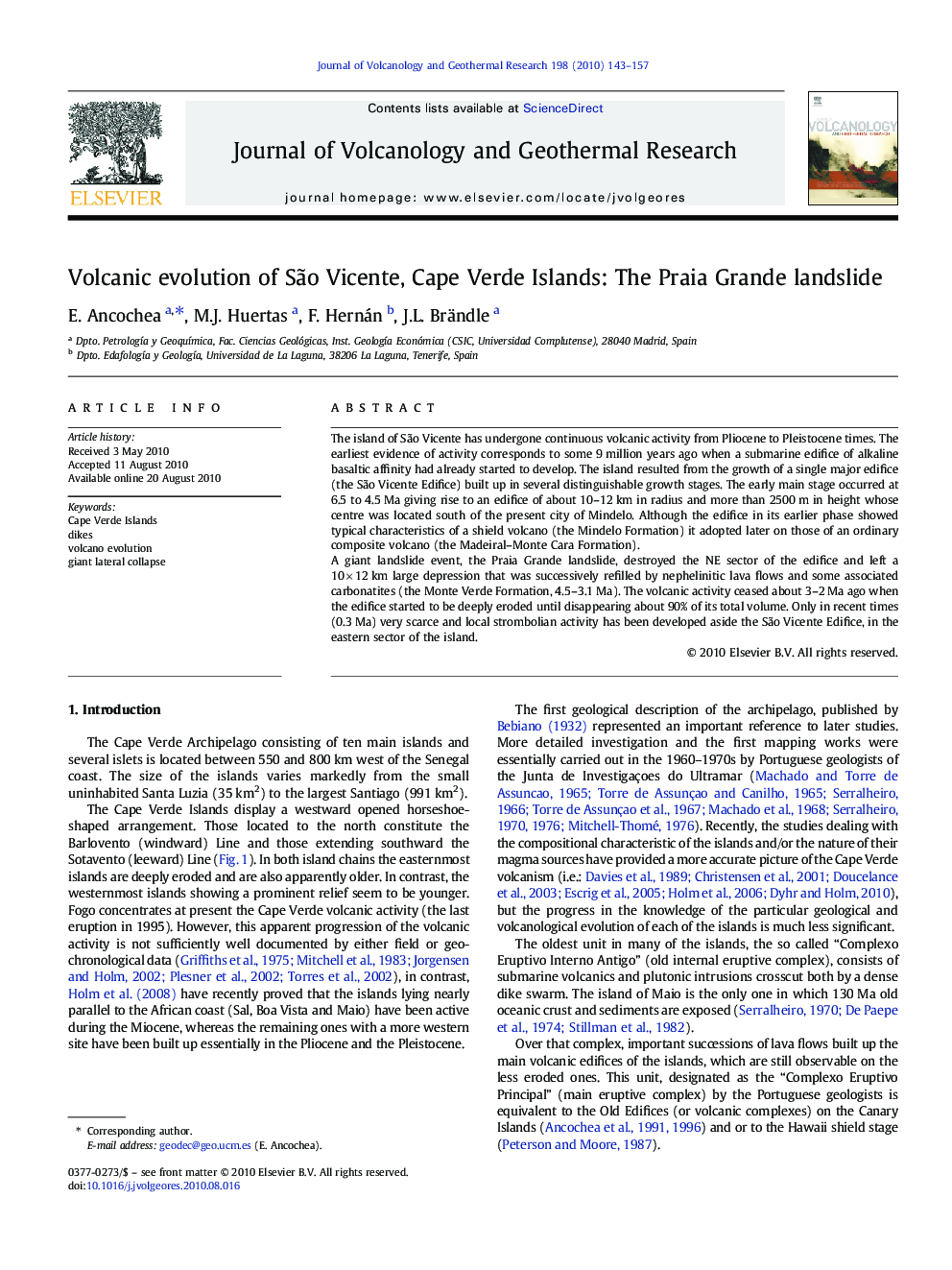| Article ID | Journal | Published Year | Pages | File Type |
|---|---|---|---|---|
| 4712896 | Journal of Volcanology and Geothermal Research | 2010 | 15 Pages |
The island of São Vicente has undergone continuous volcanic activity from Pliocene to Pleistocene times. The earliest evidence of activity corresponds to some 9 million years ago when a submarine edifice of alkaline basaltic affinity had already started to develop. The island resulted from the growth of a single major edifice (the São Vicente Edifice) built up in several distinguishable growth stages. The early main stage occurred at 6.5 to 4.5 Ma giving rise to an edifice of about 10–12 km in radius and more than 2500 m in height whose centre was located south of the present city of Mindelo. Although the edifice in its earlier phase showed typical characteristics of a shield volcano (the Mindelo Formation) it adopted later on those of an ordinary composite volcano (the Madeiral–Monte Cara Formation).A giant landslide event, the Praia Grande landslide, destroyed the NE sector of the edifice and left a 10 × 12 km large depression that was successively refilled by nephelinitic lava flows and some associated carbonatites (the Monte Verde Formation, 4.5–3.1 Ma). The volcanic activity ceased about 3–2 Ma ago when the edifice started to be deeply eroded until disappearing about 90% of its total volume. Only in recent times (0.3 Ma) very scarce and local strombolian activity has been developed aside the São Vicente Edifice, in the eastern sector of the island.
Research Highlights►A new evolution model of Sao Vicente (Cape Verde) is presented. ►Three main growth stages of the island: one submarine, and two subaerial are distinguished, dated and characterized. ►The original shape of the old main edifice is reconstructed; size and volume are estimated. ►A (~ 90 km3) giant landslide collapse event in the NE flank of the edifice is inferred.
